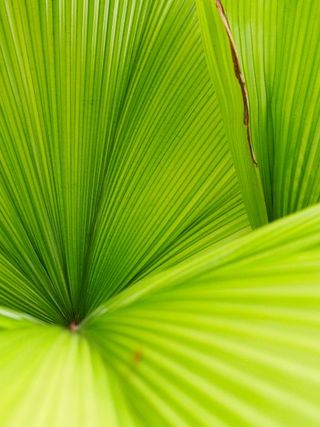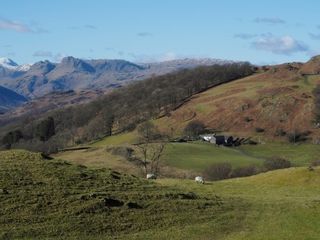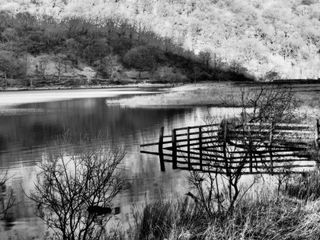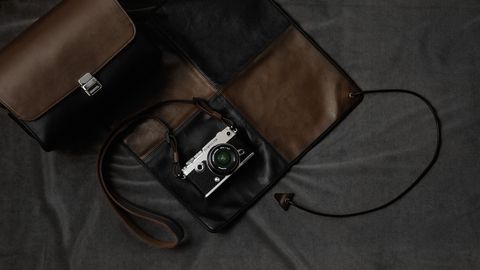Why you can trust TechRadar
The PEN-F 's sensor has 20.3 effective pixels, which is approximately 25% more than on any other current Olympus PEN or OM-D camera. As our lab tests reveal, in comparison with the PEN E-M10, that increase in pixel count brings a significant hike in the amount of detail in images at lower sensitivity settings. However, above ISO 3200 the level of detail in PEN-F images is a little lower than in the E-M10's shots. This is likely to be because the photoreceptors (pixels) are smaller on the new sensor, resulting in a weaker image signal and more noise.
This supposition is confirmed by our signal to noise ratio measurement as the PEN-F's raw file scores are a little lower than the E-M10's. Interestingly, the JPEG scores are similar..
Despite the difference in the raw signal to noise ratio scores, noise is controlled well for most of the PEN-F's sensitivity range. As usual, in the default noise reduction setting you can expect to see some fine details being lost from JPEGs at the upper sensitivity settings. Nevertheless ISO 6400 images (raw and JPEG) look good at A3 size. Above this setting the camera starts to struggle a bit with reds, making them too saturated and vibrant, and the details in JPEGs become more painterly in appearance at 100% on screen.

• Despite the relatively low light, low contrast and netting, the PEN-F's autofocus system was able to get this moving subject sharp. Click here for a full size version.

• Using I-Enhance Picture Mode has helped to produce a nice vibrant image here. Click here for a full size version.

• Despite using the Self-Timer with Anti-Shock enabled, at 100% the details of this flower don't look super-sharp, but there's enough detail to make huge prints with High Res Shot mode enabled. Click here for a full size version.
At the same scale, mid to high sensitivity raw files look a little sharper and have a bit more detail than simultaneously captured JPEGs, but there's also a slight increase in texture. Drop down to more standard viewing sizes, however and there's not much difference in the their level of noise or detail.
In real world shooting situations the PEN-F produces attractive images that have a good level of detail. At 100% JPEGs lack the 'bite' or sharpness of files from some other cameras, but they look good when sized to make prints.
Switching to the High-Res Shot mode slows shooting down considerably, with each image taking around 9 seconds or more to process and clear the buffer, but the results are very impressive and detail levels increased markedly, enabling much bigger prints to be made. At 300ppi the standard 20Mp images measure 43.89 x 32.92cm (27.2 x 20.4 inches) while the 50Mp JPEGs measure 69.09 x 51.82cm (27.2 x 20.4 inches), the 80Mp raw files are even bigger at 87.78 x 65.84cm (34.56 x 25.92 inches) – that's bigger than A1 size!
As we found with the OM-D E-M5 Mark II, however, High-Res Shot mode cannot be used with moving subjects and the camera must be kept absolutely still, ideally on a tripod. The need to avoid moving subjects rules out using this mode for landscapes with moving foliage or water, unless you use longer exposures – although remember the maximum is 8 seconds and the smallest aperture available is f/8. It's also essential to use Self-Timer with Anti-Shock enabled to get the best from the sensor.
There seem to be an almost infinite number of ways to tweak the colour of JPEGs to suit your preferences, so if you don't like the results from the PEN-F you probably just need to find the right setting. The Natural Picture Mode makes a good starting point and produces natural, if slightly muted colours and contrast. If you want a bit more punch, switch to the Vivid or I-Enhance mode.

• Landscape – JPEG version. Click here for a full size image.

• Landscape – raw version (converted to JPEG for display). At 100% on-screen the raw version of this image shot at ISO 200 has a tiny bit more micro contrast than the simultaneously captured JPEG. Click here for a full size version.

• The Dramatic Tone II Art Filter can produce some attractive high-contrast images. Click here for a full size version.
Although the PEN-F has a contrast detection system rather than a hybrid one that combines contrast detection with a phase system, it's fast and accurate in many situations. It works well in quite low light – for example, indoors on a dull day – but you can expect a bit of hunting as contrast levels drop.
Provided that you keep the active AF point over the subject it's also pretty good at keeping moving subjects sharp in continuous AF mode. The Tracking AF mode is a bit more hit-and-miss, it sticks with some subjects, following them around the frame but often seems too lose interest and wander off the main target. It doesn't necessarily jump onto other high contrast objects, it can drift from the target almost at random
While the face and eye detection modes can be useful when you're shooting portraits, when they're activated the camera assumes that any face in the scene is the main subject and it overrides your point selection. I preferred to turn face detection (or Face Priority AF as Olympus calls it) off for the majority of my shooting.
Olympus's stabilisation system is well regarded and it doesn't disappoint in the PEN-F. When shooting with the popular 12-50mm f/3.5-6.3 EZ ED MSC lens at 50mm, which equates to 100mm in full-frame terms, I found I was able to get a high hit rate at 1/6sec, producing close-range images that look acceptable at 100%. That's a compensation factor of around 4EV.

